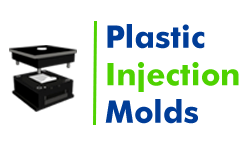- Mould Manufacturer
- Tooling
- Moulding Die
- Plastic Molding
- Plastic Injection Molding
- Injection Molding
- Nylon Injection Molding
- Injection Moulding
- Custom Injection Molding
- Injection Mould
- Injection Mouldings Process Manufacturers
- Medical Injection Molding
- Polycarbonate Injection Moulding
- Rapid Injection Moulding
- Injection Molds
- Injection Molding Cost
- Injection Molding Suppliers
- Injection Moldings
- HDPE Molding
- Metal Injection Molding
- Rubber Injection Molding
- Mold Designing
- Prototyping
- Automotive Injection Molding
- Blow Molding
- 3D Printing
CNC Prototyping: Reasons To Choose
When it comes to crating components or models, several companies leverage CNC prototyping when compared to the other methods. There may be several occasions in which CNC machining prototype proves more effective for producing a specific prototype. However, you may still want to know why choosing this option is far more beneficial. First and foremost, you need to choose a company comprising a team involved in design and engineers. The experts can better explain how the process has the potential to meet different specifications.
Reasons to choose CNC prototyping service:
Before you talk to experts to avail CNC prototyping service, here is what you need to know about picking this option.
- One of the distinctive reasons to create a prototype made from a CNS machine is when used combining the CAD ad CAM software.
- The CNC prototyping process creates parts and components of models that demonstrate the highest level of accuracy.
- The other benefit of CNC machining is allowing the manufacturer to use a variety of materials.
- Whether the prototype is made from meal or plastic, the CNC can accommodate it with ease.
- Besides producing the precision protocols, the CNC machining prototype service helps in the generation of hundreds and thousands of replicated products. All that the operator dies is incorporate new information into the software, which in turn instructs the machine to develop the number of finished products that are compliant with accuracy at the highest level.
CNC rapid prototyping: things to observe
Although CNC rapid prototyping offers several benefits, the first one is that it produces hundreds and thousands of finished products and allows the engineering teams to assess the problems that are likely to emerge. Besides, the minor or geometrical issues that are not easy to understand can come in the grasp of a computer model. Therefore, the manufacturers can make the necessary changes before starting full production.
Rapid CNC machining: benefits several industries
With rapid CNC machining, several industries, such as aviation, automotive, architecture, construction, and aerospace may get finished product in full details and precision. Investing in prototype processes using CNC machining may reduce time and expensive mistakes.
We are one of the best service providers known for rapid prototyping CNC machining, so talk to our experts today to uncover the benefits or to know how your industry can benefit from the process.
FAQ
- Q1. What Is CNC Rapid Prototyping?
CNC rapid prototyping uses subtractive manufacturing techniques to produce tangible prototypes using Computer Numerical Control (CNC) equipment. Using a computerized design as a guide, material from a block or sheet is sliced away. CNC provides accuracy and adaptability, facilitating rapid prototype iteration and improvement for a range of sectors and uses.
- Q2. What Materials Are Used In Rapid Prototyping?
Materials like thermoplastics, photopolymers, metals, ceramics, and composites are frequently used in rapid prototyping. These materials have been selected with consideration for things like longevity, adaptability, and appropriateness for the intended use. Prototyping procedures can be completed quickly and affordably because of technologies like 3D printing, CNC machining, and injection molding.
- Q3. What Machine Is Used For Rapid Prototyping?
Rapid prototyping is frequently accomplished with a 3D printer. Using a computer design as a guide, it deposits material layer by layer to construct three-dimensional things. This technique speeds up the development process in a variety of industries, including engineering, manufacturing, and design, by enabling quick iteration and testing of product concepts.







.webp)

